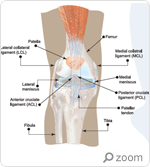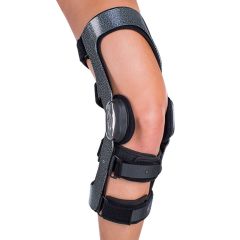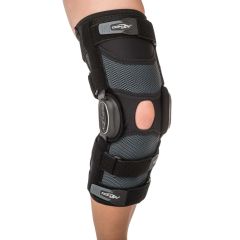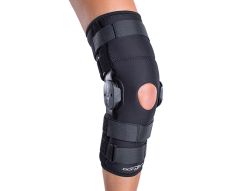ACL Injury / Tear

Soccer, basketball and football athletes most often experience ACL injuries, with nearly 200,000 cases seen each year. While this injury is more frequently seen in women than men, reasons for which include differences in muscular strength, physical conditioning and neuromuscular control, the cause, pain and treatment is the same.
Learn about ACL injuries and become a more educated athlete so you know when to seek medical attention and can return to your sport as soon as possible.
What is it?
ACL stands for anterior cruciate ligament; this ligament runs diagonally across in the middle of your knee and has a number of duties: “It prevents the tibia from sliding out in front of the femur, as well as provides rotational stability to the knee,” according to the American Academy of Orthopaedic Surgeons.
When the ACL is injured, the surrounding ligaments and cartilage are often sprained as well. While the ACL could tear only partially, this is rare; more commonly there is a near complete or complete tear.
How Does it Happen? What Causes it?
This injury is most common in athletes who play football, basketball and soccer for a reason—ACL tears happen as a result of rapid direction changes, improperly landing from a jump, stopping suddenly, and direct collision with another player, all of which are common aspects of these three sports.
What are the Symptoms?
When the tear happens you may hear a popping noise and/or feel your knee give out from under you. Within 24 hours you’ll begin to feel severe pain and swelling in your knee and aching or tenderness in the joint.
What is the Treatment?
A medical professional may be able to determine the severity of your injury with a physical exam; in some cases you need an X-ray or MRI to confirm the diagnosis.
Once diagnosed, patients will almost always have to receive surgery. For older athletes, or those who are relatively inactive, a brace and physical therapy may be enough to heal the injury.
In almost every other case, however, a minimally invasive surgery is required to reconstruct the ligament. Post-surgery recovery time varies from one athlete to the next, but most people are able to return to their sport within six to nine months, according to Health.UCSD.edu.
ACL injuries are very common, and almost always result in a complete tear of the ligament. Work to prevent this injury by keeping your lower body strong with jump squats, lunges and landing practice.
Unfortunately, even a strong lower body can’t prevent an ACL tear. Knowing the symptoms ensures you can seek medical attention immediately, and ultimately results in a quick return to your sport.
The reality is that there is no quick fix to an ACL injury, however there is a solution to ease pain and speed up recovery: wearing an ACL brace.
With the right brace, the ACL will have the support it’s needed to take pressure off of it while you are rehabbing it back to health. Bracing stabilizes the knee while in motion and helps protect the knee during everyday life and sport. It also keeps you confidence up, knowing that you can return to your activity, at the skill level pre-injury, with the right protection. And with the latest technology, braces today are not bulky, letting you focus on your sport without any heavy equipment or fuss.







